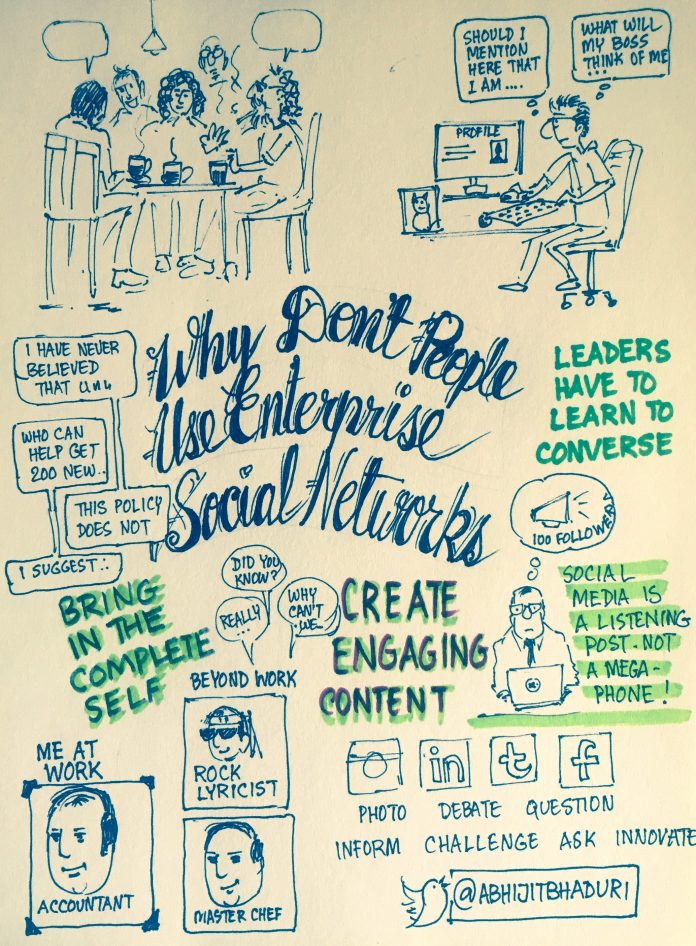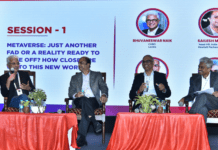Employees must be able to fearlessly criticise any policy or view without being censured or admonished.
Organisations have bought the latest and the best enterprise social platforms, such as Chatter, Yammer and SocialCast. To put it mildly, the usage remains lukewarm.
It is not the thriving watering hole that brings everyone together; a place that replicates the heated debates and discussions of the smoke-filled cafes where intellectuals share their ideas; a site where artists display their provocative versions of iconoclastic art and where auteurs discuss their cinematic dreams.
Challenge no. 1: Reflect the real world
The enterprise social network starts with a bang alright. All employees are pushed and prodded to create their profiles. Then they groan. That is the first sign of trouble. The IT group creates part profiles by importing some sections of the employee database, with the intention of easing user adoption. Beyond the name and department details, there is precious little that can be put up on the profile.
“Let us add their hobbies”, suggests someone.
“I don’t care who likes to go hiking or reads Calvin and Hobbes comics,” says someone who vetoes the plan.
“You are right! Let the employee choose what to put. That is the safest option.”

The simple act of populating employee profiles on the social network makes employers confront an unpleasant truth — they do not really know the employees beyond copious amounts of data on performance. This is somewhat like parents who store only the child’s report card and throw out all those sheets of drawings and misspelt letters written but never delivered.
By contrast, Facebook gives more than ten options to describe a relationship. The options range from single, in a relationship, engaged, married, separated, widowed, divorced, in a civil union, in a an open relationship and in a domestic partnership, to its very eloquent option, “It’s complicated”.
The lesson is very clear. Enterprise social networks need to reflect the real world.
Challenge no 2: Learn to converse
What is the purpose of creating such a platform? The employees at the bottom of the pyramid look at it as a way of bringing in their complete self.
The hobby groups are the first to take off. Then there are work-related huddles. There are communities of all kinds. The group that remains silent on the enterprise network is the senior leadership.
The leaders view large gatherings as great opportunities to ‘send messages’. Social media is a listening post and not a megaphone to make announcements which cannot be challenged. The social world is actually about listening and engaging in real-time conversations. Leaders feel vulnerable at the very thought of having to converse, argue and defend their points of view.
Challenge no 3: Create engaging content
People have learned that creating a Facebook page with a thousand ‘likes’ does not amount to anything. They come back voluntarily to places that create real, engaging and diverse content. The opinionated have to get a chance to hold forth while the readers must have a chance to throw bouquets and brickbats at them.
The employees must feel that they can criticise any policy or leader’s views without fear of being rebuked or hunted down. The ability to tolerate dissent is the lifeblood of a thriving organisation’s culture. The social network only needs to reflect that. This can be a powerful form of employee engagement.
Until then, enterprise social networks will remain lame endeavours.
(The author is the chief learning officer, Wipro Group.)
Value our content... contribute towards our growth. Even a small contribution a month would be of great help for us.
Since eight years, we have been serving the industry through daily news and stories. Our content is free for all and we plan to keep it that way.
Support HRKatha. Pay Here (All it takes is a minute)




























Glad to see corporates move to acknowledge the challenge with corporate social networks. I am sure despite Mr Bhaduri’s intentions, we are still some way from making these work, for reasons beyond what he has mentioned.
A critical fact of course is to ensure that some key activities, announcements etc are made only on such social networks, to give employees a reason to check in.